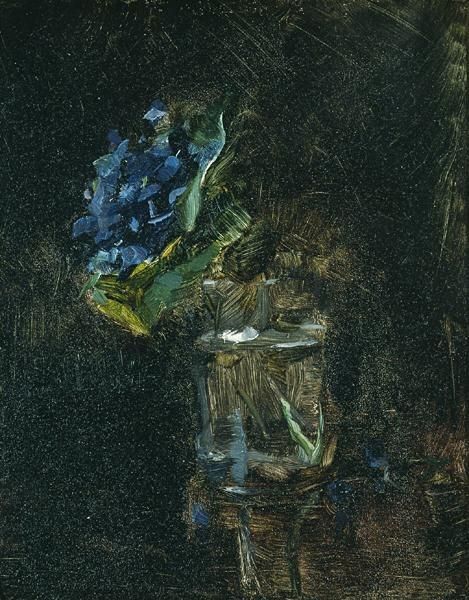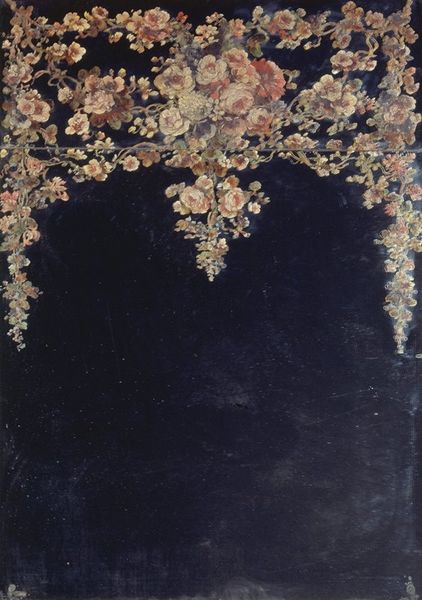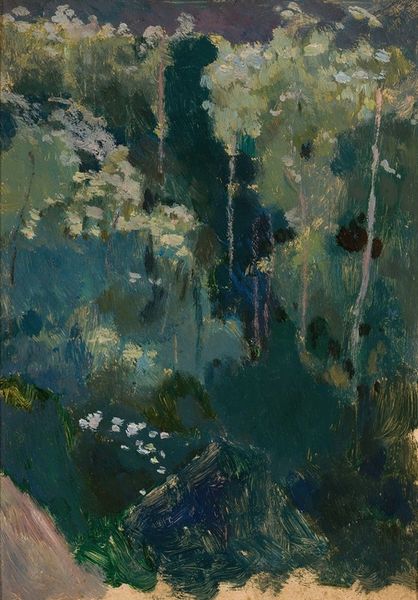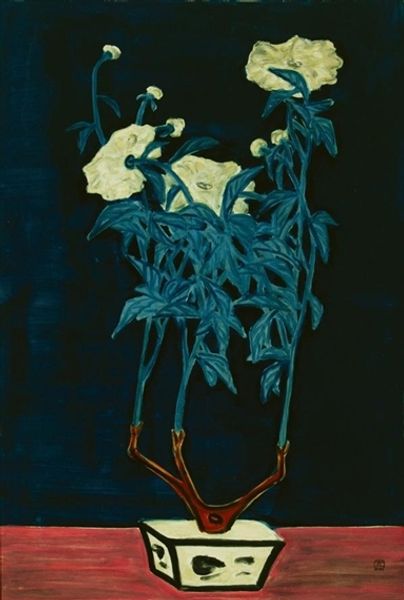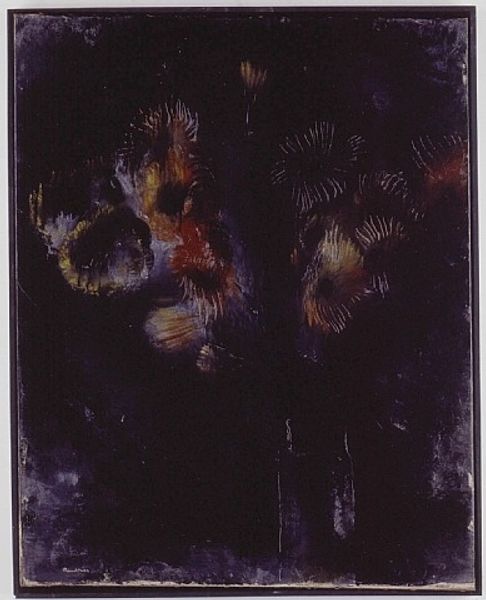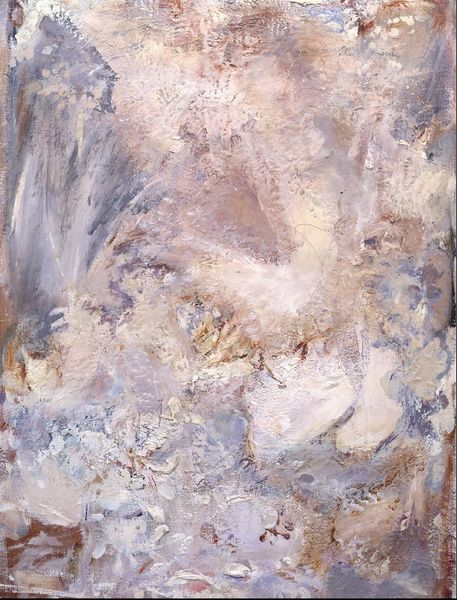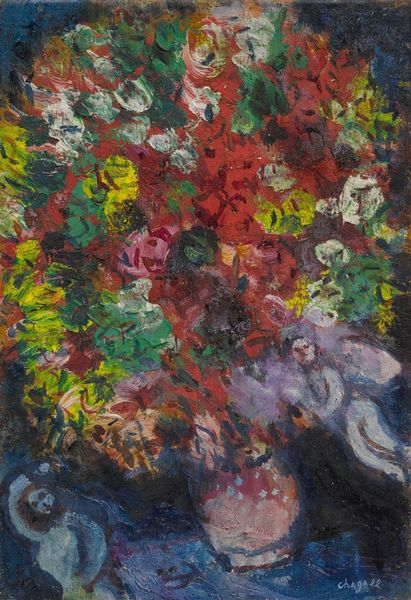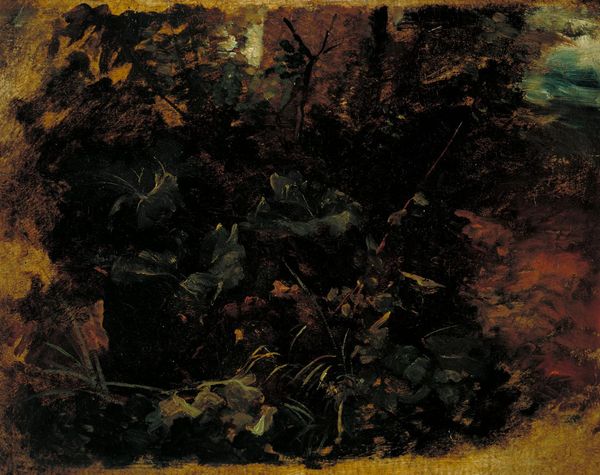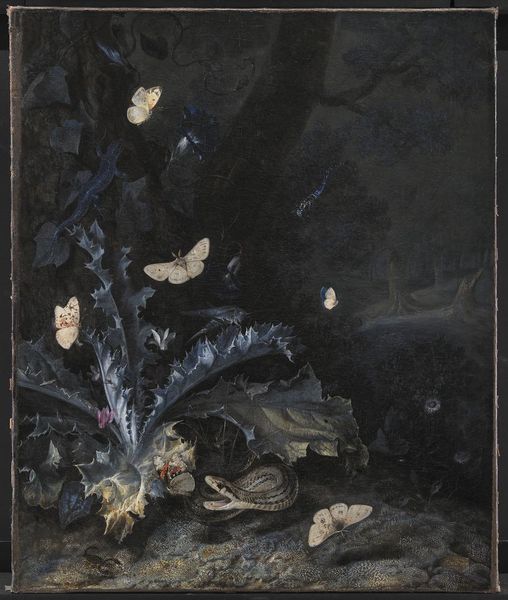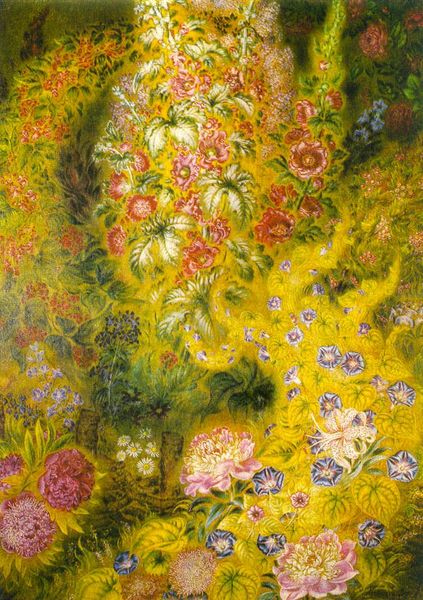
painting, watercolor
#
painting
#
impressionism
#
watercolor
#
watercolor
Copyright: Public Domain: Artvee
Curator: James Abbott McNeill Whistler created this watercolor painting, sometime between 1872 and 1876. It’s known as "The Blue Girl." Editor: "Blue Girl?" It looks like a vase overflowing with flowers! Gloomy, a touch wistful. Like a forgotten corner of a garden after the rain. Curator: Indeed. The "Blue Girl" title may seem misleading, yet Whistler's use of color creates a unifying atmospheric effect. The vase, predominantly blue, subtly anchors the composition. Considering color psychology, blue is associated with depth, stability, and calm... but also sadness. Editor: Right, I get that sadness—almost like these beautiful flowers are slowly dissolving back into the shadows. Whistler often blurred lines. Everything kind of bleeds together. Is that something intentional? A reflection of the impermanence of beauty, maybe? Or fleeting moments? Curator: Precisely! Whistler was deeply influenced by Japonisme. You'll note the subtle asymmetry. There's also a focus on capturing a fleeting impression rather than meticulous detail. Notice how the background seems to fade, drawing our eye to the bloom itself. In Japanese art, this appreciation of the ephemeral is known as "mono no aware." It is a key motif in a watercolor medium. Editor: Mono no aware… Beautiful. So, the "Blue Girl" is a container. In it the blooms don't necessarily have individual identities, but they merge within it, suggesting both containment and the flow of emotions. A vessel, really! And even the tall iris at the back reaches above that sense of melancholy. Almost defiant. Curator: Excellent! Also consider that, traditionally, flowers symbolize various things: love, beauty, remembrance... Whistler is not interested in exactness of any one concept; the vagueness is a language of emotion. Editor: He certainly lets us interpret things! It's evocative... Makes me think of poems by Baudelaire, steeped in spleen and yearning. Even with beauty, we have melancholy and mystery. The artwork evokes more than just observation of flowers, it is very contemplative! Curator: Whistler encourages the viewer to respond viscerally. In Japanese thought, one can contemplate any object, natural or otherwise, and it has potential for spiritual insight. The container provides an armature for the flowers that may otherwise go unnoticed. It is both a vessel and a symbol for the ineffable. Editor: Very true! In the end, you can choose to let the gloom overtake you or… celebrate what's beautiful, before it’s gone. Curator: Nicely put! That sums it up beautifully!
Comments
No comments
Be the first to comment and join the conversation on the ultimate creative platform.
